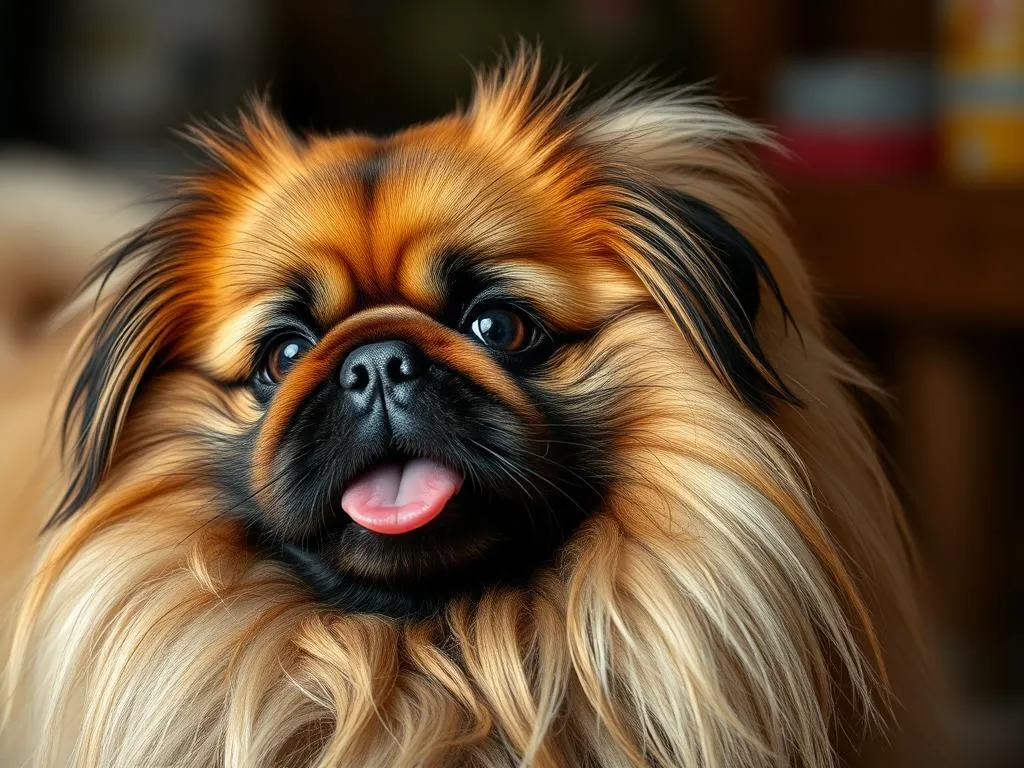
Introduction
Dog breeds hold significant importance in our lives, not only as companions but also as part of our cultural heritage. Understanding the unique characteristics of different breeds helps potential owners make informed decisions. One such breed that stands out is the Pekingese. Known for its regal presence and charming demeanor, the Pekingese has a rich history that intertwines with Chinese royalty. This article delves into the captivating world of the Pekingese, exploring its history, physical traits, temperament, health considerations, and more.
History and Origin of the Pekingese
Ancient Roots
The Pekingese traces its origins back to ancient China, specifically the Tang Dynasty (618-907 AD). This breed was favored by Chinese royalty, often seen lounging in the lap of emperors and empresses. The Pekingese was considered a symbol of nobility and luxury, reserved for the upper echelons of society. In fact, the breed’s name is derived from the city of Peking (now Beijing), where it was primarily developed.
Development Over Time
As the centuries progressed, the Pekingese underwent several changes in breed standards. Initially bred for companionship, these dogs also found their place in Chinese mythology and folklore. They were believed to possess protective qualities, and legends often depicted them as guardians of sacred temples. However, during the late 19th century, Western interest in the breed surged, leading to a decline in traditional breeding practices.
Arrival in the West
The Pekingese made its way to the Western world in the late 1800s, with a significant boost in popularity following the Boxer Rebellion in 1900. American and British soldiers brought the breed back home, and it quickly became a fashionable pet among the elite. Unfortunately, the impact of World War II led to a drastic decline in the breed’s population, but dedicated enthusiasts worked tirelessly to revive it, ensuring the Pekingese’s place in the hearts of dog lovers worldwide.
Physical Characteristics of the Pekingese
Size and Weight
The Pekingese is a small dog, typically measuring between 6 to 9 inches tall at the shoulder and weighing anywhere from 7 to 14 pounds. Factors such as genetics and diet can influence size variations, but the compact stature remains a defining feature of the breed.
Coat and Colors
One of the most striking aspects of the Pekingese is its luxurious coat. The breed boasts a long, flowing double coat that requires regular grooming to prevent matting. The texture is soft and dense, giving the dog a majestic appearance. Common color variations include fawn, black, white, and shades of cream. Some Pekingese may also exhibit unique patterns, adding to their visual appeal.
Distinctive Features
The Pekingese is easily recognizable by its distinctive flat face and large, expressive eyes. This unique facial structure, known as brachycephalic, contributes to the breed’s endearing charm but can also lead to health issues, such as breathing difficulties. The overall appearance of the Pekingese conveys an air of dignity, making it a cherished companion for many.
Temperament and Behavior
Personality Traits
The Pekingese possesses a unique personality that sets it apart from other small dog breeds. Typically affectionate and loyal, these dogs form strong bonds with their owners. They can be quite independent and may exhibit a stubborn streak, often leading to a delightful yet challenging personality. Their playful nature and spirited antics make them a joy to have around, though they may not always be the best fit for families with very young children.
Socialization Needs
Early socialization is crucial for the Pekingese to develop into well-adjusted adults. Exposing them to various environments, people, and other pets can help mitigate any potential behavioral issues. While they can be friendly and sociable, some Pekingese may exhibit protective behaviors, particularly towards their family members. Thus, proper introductions and consistent training are essential.
Training Considerations
Training a Pekingese can present its own set of challenges. Their independent nature may make them less inclined to follow commands, requiring patience and persistence from their owners. Positive reinforcement methods, such as treats and praise, work best with this breed. Short training sessions that are engaging and fun can help keep their interest and improve responsiveness.
Health Considerations
Common Health Issues
Like all breeds, the Pekingese is susceptible to certain hereditary and breed-specific health concerns. Brachycephalic breeds, including the Pekingese, often face respiratory issues due to their unique facial structure. Other common health problems include eye conditions, such as progressive retinal atrophy (PRA), and orthopedic issues like patellar luxation. Regular veterinary check-ups are essential to monitor these potential health issues.
Regular Health Maintenance
Routine veterinary care is vital for maintaining the health of a Pekingese. Regular check-ups help in early detection of health concerns, ensuring timely intervention. Vaccinations, flea and tick prevention, and dental care are also crucial components of a comprehensive health maintenance plan.
Lifespan and Aging
The average lifespan of a Pekingese is around 12 to 15 years. As they age, it is important to monitor for signs of aging, such as changes in mobility, appetite, and behavior. Adjustments in diet and exercise may be necessary to accommodate their changing needs.
Care and Maintenance
Grooming Needs
The Pekingese requires regular grooming to keep its coat in optimal condition. Ideally, owners should brush their Pekingese several times a week to prevent matting and tangles. Additionally, regular baths, nail trimming, and ear cleaning are essential for maintaining overall hygiene. Dental care should not be overlooked; daily brushing is recommended to prevent dental issues.
Exercise Requirements
Despite their small size, Pekingese dogs have moderate exercise needs. Daily walks and playtime are important for their physical and mental stimulation. However, they are not high-energy dogs and can adapt well to apartment living, provided they receive regular outings. Engaging activities like gentle fetch or interactive toys can keep them entertained.
Diet and Nutrition
A balanced diet is crucial for the health of a Pekingese. Quality dog food formulated for small breeds is recommended, taking into account their age, weight, and activity level. Portion control is important to prevent obesity, which is a common concern in this breed. Owners should consult with their veterinarian to determine the best dietary plan for their Pekingese.
Pekingese in Popular Culture
Representation in Media
The Pekingese has made notable appearances in various forms of media, from classic films to modern television shows. Their unique appearance and charming personality have captured the hearts of many, often being portrayed as loving companions or regal pets. This representation has contributed to their popularity throughout the years.
Notable Pekingese Owners
The breed has been favored by numerous famous personalities, including royalty and Hollywood stars. Celebrities like Queen Victoria of England and actress Marilyn Monroe were known for their love of the Pekingese. Their ownership has further solidified the breed’s status as a companion for those with discerning tastes.
Breed Recognition
The Pekingese is recognized by several kennel clubs and breed associations, including the American Kennel Club (AKC). This recognition helps maintain breed standards and promotes responsible breeding practices, ensuring the health and well-being of future generations of Pekingese.
Conclusion
The Pekingese is a breed steeped in history, known for its regal demeanor and affectionate nature. With unique physical characteristics and a charming personality, this breed makes a wonderful companion for those who appreciate its distinct qualities. Potential owners should consider the Pekingese’s specific needs, from grooming and exercise to health considerations, to ensure a fulfilling relationship with this lovable breed. Their rich history, combined with their endearing traits, makes the Pekingese a cherished member of the dog breed world.









